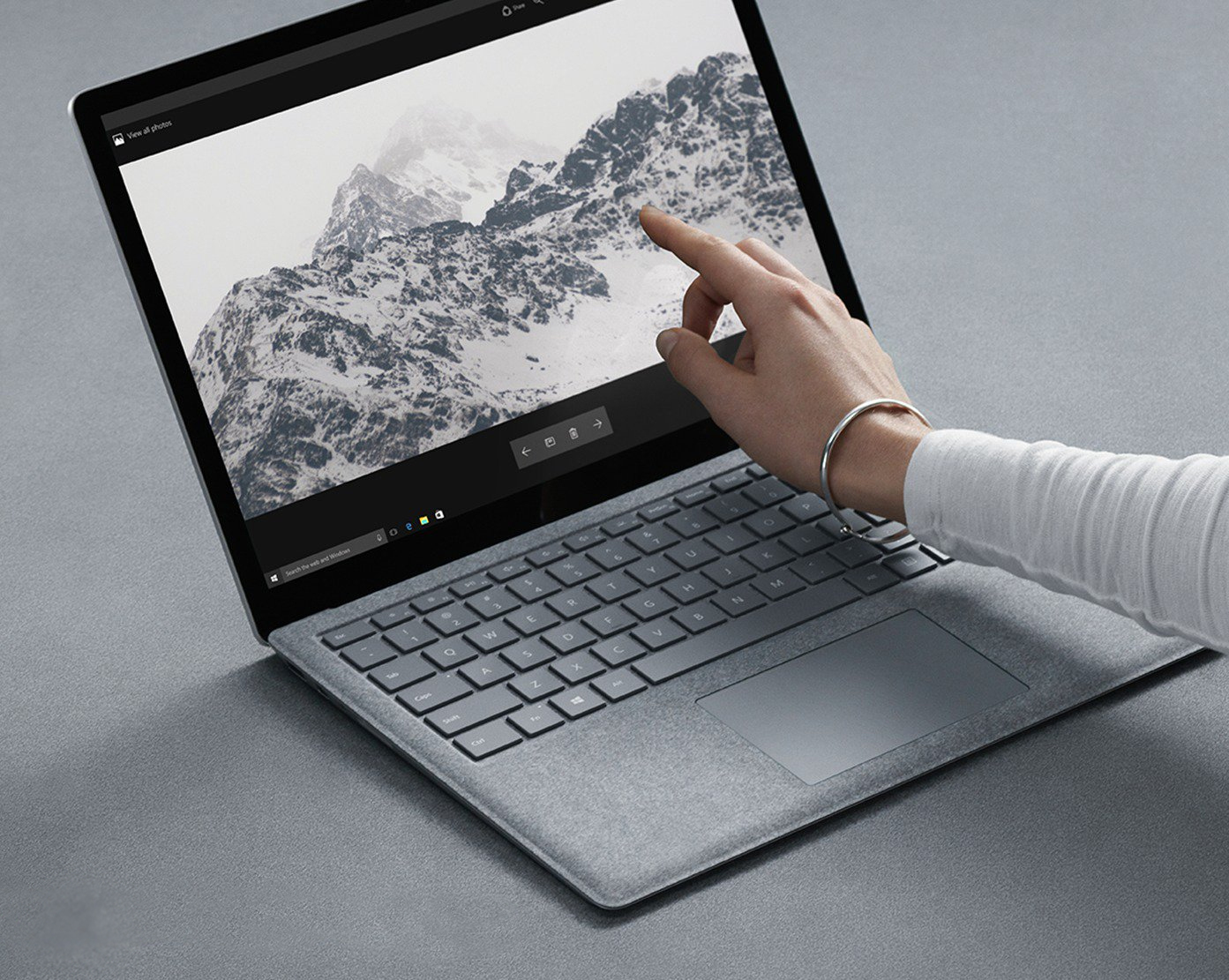
Microsoft wants to upend the traditional classroom. That’s the message the company sent during its press event on Tuesday, during which it unveiled a new version of Windows, the $999 Surface Laptop, and a slew of other announcements aimed at the education market.
Just seven months earlier, the Redmond, Wash.-based company set its sights on creative professionals with its Surface Studio — a mega-sized tablet that folds down to resemble a tilted canvas — which it targeted at illustrators, artists, architects and the like. Such focus is part of Microsoft’s effort to define the role Windows will play in an era in which more devices are capable of connecting to the internet, from TVs to watches. “You step back and say . . . Why would the world want these things? Where could we have the biggest impact?” says Terry Myerson, executive vice president of Microsoft’s Windows and Devices Group. “You have to start early and start with that purpose and what you’re doing.”
Myerson sat down with TIME to discuss the Surface Laptop, the new Windows 10 S operating system, and more. Below are select excerpts from our conversation that provide insight on Microsoft’s strategy around the new products. The text has been edited for length and clarity.
TIME: The first Surface started as the tablet that could replace your laptop, and now here we are with a Surface Laptop. Can you talk about the strategy behind that?
Terry Myerson: At the core the Windows ecosystem today, laptops are the category where we have the most impact on the world. We participate in so many [categories], from mixed reality to large screens to phones to laptops . . . And laptops are the biggest category. And in laptops we saw an opportunity to really try and set a new bar. At the core of it is Windows 10 S, the ability to design a device specifically for this new platform. That’s what allows us to have the 14.5 hours of battery life. That’s what allows us to have the better performance. . . And to have a laptop that can be designed specifically for Windows 10 S, our partners are going to look at the customer reception to it and [decide] should they, should they not, it’s their business. But our goals are to grow the Windows ecosystem.
But why use a standard laptop to showcase Windows 10 S over a detachable or hybrid?
[We decided] let’s put it on a laptop because that’s really the soul of Windows. We’ve been trying this form factor and that…but there was something wholesome to say, customers are asking for a laptop, we’ve innovated the core platform to enable a laptop, so let’s build a laptop. Sometimes it gets so simple. And we’re not done innovating.
This isn’t the first time Microsoft has launched more than one version of Windows. Windows RT, the lighter version of Windows 8 that debuted in 2012, wasn’t heavily embraced by partners, caused confusion among customers, and was eventually phased out. Why will Windows 10 S be different, and what have you learned?
A lot. . .There are things that are distinctly different. RT ran on ARM underpowered processors. This is going to run on every class of hardware. There are some low-spec devices it will run on, but it will also run on Surface Laptop, which is a beautiful premium device. If you buy a Windows 10 S device, you can switch to Windows Pro. That’s a big difference versus you just buy it and you get what you get. So now you have a performance system, you have a way to say ‘Okay, I don’t want these constraints, I want to go out into the open world’. . . And there are a lot more [apps] in the Windows Store now than there was. And this version of Windows is more popular than Windows 8 . . And those three things are all learning we might not have had if we couldn’t reflect on the past. But that’s what we do, we’re always trying to learn. . .When you go back in time and look at what they were trying to achieve, it was in some ways similar. If I had to pick a fourth thing, it’s really focusing on at least initially these students in the classroom. RT was launched as more of a consumer product.
More Must-Reads from TIME
- Donald Trump Is TIME's 2024 Person of the Year
- Why We Chose Trump as Person of the Year
- Is Intermittent Fasting Good or Bad for You?
- The 100 Must-Read Books of 2024
- The 20 Best Christmas TV Episodes
- Column: If Optimism Feels Ridiculous Now, Try Hope
- The Future of Climate Action Is Trade Policy
- Merle Bombardieri Is Helping People Make the Baby Decision
Contact us at letters@time.com